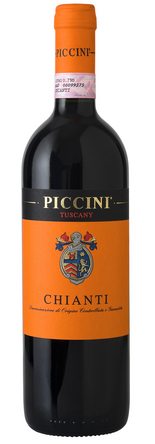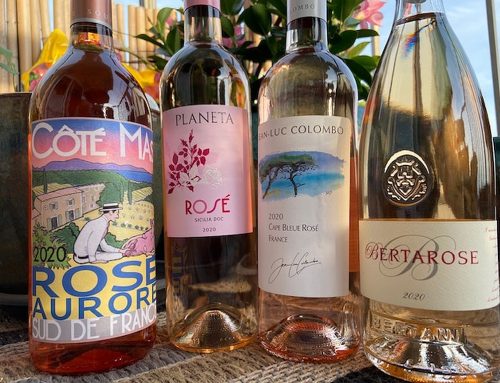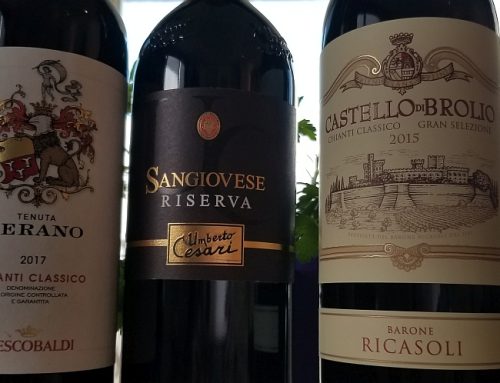Starting the New Year with the good value 2011 Piccini Chianti and 2009 Piccini Chianti Classico will salve the conscience and the checking account when December’s credit card bills arrive.
In 1882, Angiolo Piccini purchased 15 acres of vineyard land in Tuscany’s Poggibonsi village. Over the course of four generations, the Piccinis built that humble beginning into a force of four wineries and nearly 1,000 acres spread across Tuscan vineyard sites in Chianti Classico, Montalcino, and Maremma. The family’s energetic efforts accounts for approximately 11 percent of Chianti wine. And while that volume allows for lower pricing, Piccini offers quality, too.
The bold orange-labeled 2011 Piccini Chianti is a blend of 95 percent sangiovese and 5 percent ciliegiolo. In Italian, ciliegio is the word for cherry tree, which explains the ciliegiolo grape’s color and flavor, and the underlying taste of this wine.
Sangiovese is the principal red grape of Tuscany and contributes the wine’s very attractive black cherry color, aroma and flavor. Its savoriness is balanced by soft tannins and a modest 13 percent alcohol.
By blending only indigenous grapes, the 2011 Piccini Chianti allows you to understand what a delightful treat Chianti is when tradition is honored instead of subverted by the use of the international grapes cabernet sauvignon and merlot.
The 2011 Piccini Chianti is the glass of wine you want to drink with dishes ranging from pizza to roast chicken to pasta with Bolognese sauce—and while contemplating that credit card bill sitting on your desk.
A bigger wine awaits in the bottle of the 2009 Piccini Chianti Classico. Winemaker Antonella Conti blended 85 percent sangiovese, 5 percent ciliegiolo and 10 percent merlot. The use of merlot and cabernet sauvignon in Chianti Classico has been in vogue for the last 25 years, which, in Tuscan time, is recent. Given the choice, I prefer merlot over cabernet sauvignon, as sangiovese’s high acidity melds with merlot’s velvety texture. Cabernet sauvignon’s tannic structure is too aggressive for sangiovese.
In the 2009 Piccini Chianti Classico, Conti has captured the essence of each grape: floral and cherry scents, black cherry and red fruit flavors carried on a medium body wrapped in soft tannins and gentle acidity. This is a very pleasant wine at the first taste, and captivating with each additional sip. Its quality is even more remarkable when you realize that Piccini produces 15 percent of all Chianti Classico wine. And like its sibling regional wine, the 2011 Piccini Chianti, the price is engaging, too.
I enjoyed the 2009 Piccini Chianti Classico with penne and pork sausage, and a main dish of magret duck breast and broccoli di rape, or as the vegetable is called in America, broccoli rabe.
The Piccini 2011 Chianti retails for approximately $9 and the 2009 Chianti Classico about $16.









Leave A Comment